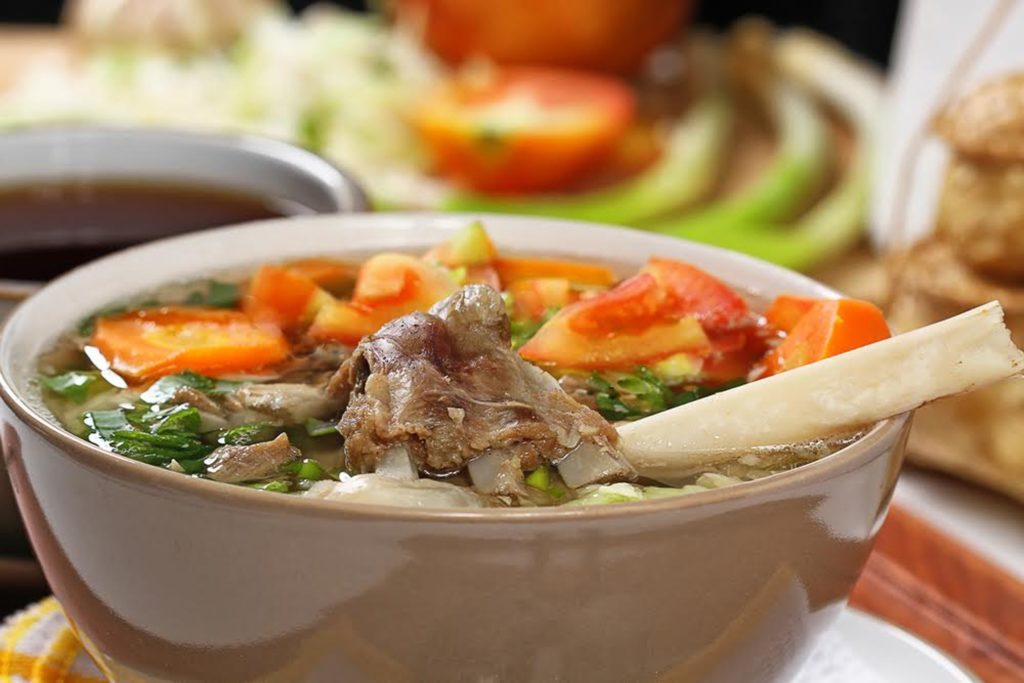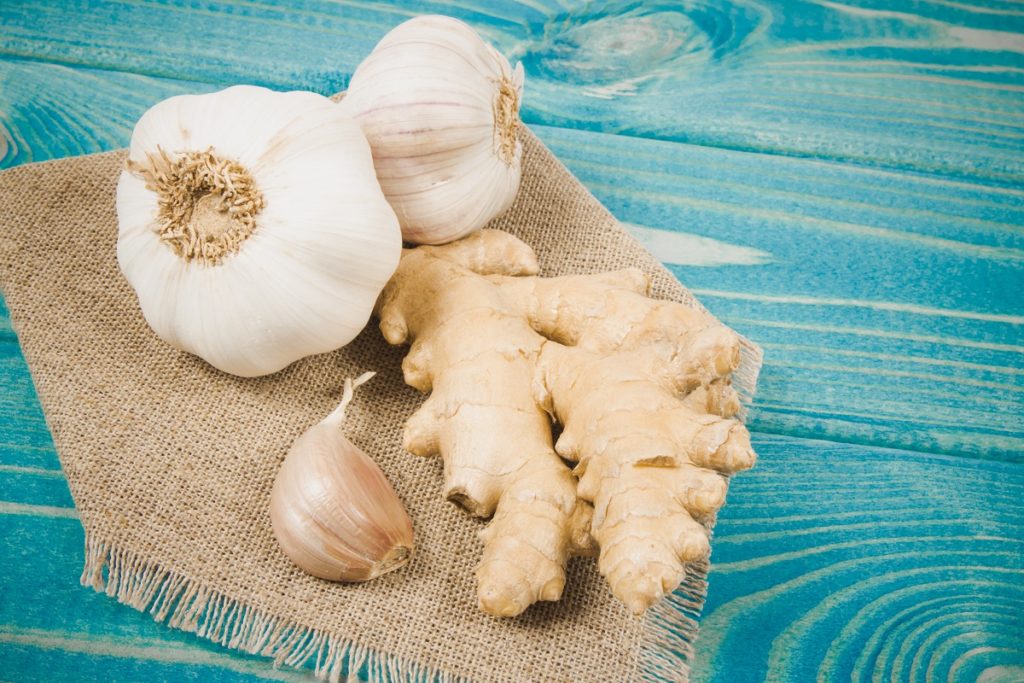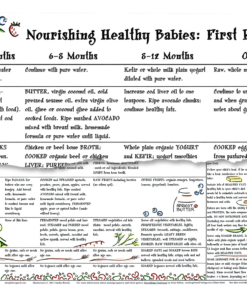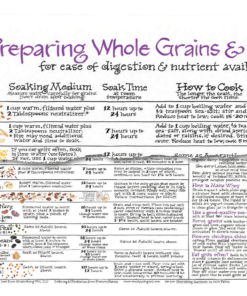The weather is turning cooler, and winter is officially just around the corner. As the temperature drops, many of us start craving foods and beverages that are warming, both in temperature and in spice. We trade in our iced tea for hot, spicy chai and swap our cold salads with warming soups, stews, and stocks.
Now that the flu season is upon us, let us choose foods that will provide the nourishment we need to stay well. One of those nourishing foods is meat stock, and when you combine it with therapeutic herbs, it is just the thing!
Meat stock is so much easier and quicker to make than bone broth. In just a few hours, you can turn meat with a joint in it (think chicken in a pot) into a nourishing meal or a batch of stock to drink. (See my list of bones you can use on page 42 of my book, The Complete Cooking Techniques for the GAPS Diet.)
Meat stock is known for its role in healing via the Gut and Psychology Syndrome (GAPS) diet, but its nourishing properties are good for everyone. I call it the “one pot meal that heals.” And with the addition of specific herbs, it can be just the thing to keep you well or nurse you back from an illness, whether you are on GAPS or not.
While most of us think of herbs as culinary—that is, adding flavor to a dish—they also have therapeutic properties. Once you know generally which herbs do what, you can spice with intention and make a meat stock that helps your body clear specific symptoms, or even prevent them. The good news is, whether you choose specific herbs for their properties or use whatever herbs are calling out to you, they are always a nourishing food that provides the building blocks your body needs to be well.
Most herbs are added right into the pot at the beginning of cooking. Others pack a greater punch if you add them into your mug or bowl just before drinking. Whichever herbs you choose, fresh herbs are best. Whether you pick them from the pot on your windowsill or purchase organic herbs from a farmers’ market or your favorite grocery, the fresher they are, the more potent. Avoid dried herbs that have not been properly stored, whether you are going for a therapeutic result or just robust flavor. And certainly avoid those from the bulk bin. Dried herbs lose their potency over time, especially when exposed to light, heat, and air. If you must use dried herbs, purchase them in small amounts in glass jars.
Let’s start with two powerhouse herbs: garlic and ginger. These are very potent, and you can control both their strength and their effect on your body by how you use them. Cooked garlic or ginger will always be milder than raw. The amount of surface area also counts, so dropping a whole clove of garlic into your stock will have a milder effect than adding garlic that is chopped or minced or pressing raw garlic into a mug after cooking.
Similarly, a nob or slice of ginger will be less spicy than the same amount chopped or minced.
For the spiciest kick of ginger, grate it and add it raw into cooked stock just prior to drinking. Take your time and experiment to see what works best for your body. I always suggest starting with the mildest and building from there. If you have not had a lot of raw (or even cooked) garlic or ginger in your diet previously, start by adding either peeled cloves of garlic or sliced coins of ginger into the Dutch oven as you are making your stock. In the next pot, or a few pots hence, add chopped garlic or ginger, and carry on from there.
Specific Herbs for your Stock
Garlic is antimicrobial and anticatarrhal, helping to clear mucous in the nose and throat. Many herbalists agree that garlic has a special affinity with the respiratory system. It is also good for circulation and blood pressure.
To support your respiratory system through the next five or six months, add a few cloves or more of garlic to your meat stock when you put it up. Also press a raw garlic clove or two into your mug just prior to drinking. Again, if you do not already consume raw garlic, I suggest you proceed slowly: press one clove into one mug once a day and see how you do. If your gallbladder is sensitive to fats and oils, it might make you burp. Burping garlic oils (or any oils) can indicate that support to the gallbladder is needed. Antimicrobial properties of garlic can provoke a strong die-off, which can be uncomfortable. Take a few days to increase how much raw garlic you are consuming.
Ginger is also antimicrobial. Because ginger is a stimulant, it is good to use when you have a cold or fever. Ginger stimulates circulation, heat, and movement. Ginger is also prokinetic, which means that it helps with movement in the digestive tract. If you are constipated, ginger is a great herb to add to your meat stock. Ginger also stimulates gastric secretions, so it can help clear indigestion and flatulence.
Many other herbs have antimicrobial properties: marjoram, oregano, rosemary, thyme. Have a cold or feel like you may be coming down with one? Add cayenne to cooked stock just prior to drinking. (Be sure to stir it well or it could burn your lips!) Have a cough? Add garlic, marjoram, fennel, and/or thyme. Fever? Cayenne, ginger, and/or horseradish. Nausea? Cayenne, cinnamon, cloves, and/or fennel.
How about turmeric? Turmeric root is famous for its anti-inflammatory properties and has been used for thousands of years in Ayurvedic cooking. If you are suffering from inflammation (joint pain and stiffness), add some turmeric root to your meat stock, both while cooking and grated in before drinking.
Don’t forget black peppercorns. Add a handful into every pot of meat stock at the start. Black peppercorns (piperine) contribute so many things. Some of their properties are antipathogenic, antibacterial, anticancer, anti-inflammatory, and neuroprotective.
During this season and every season to follow, I invite you to harness the healing power of food by adding therapeutic herbs to your meat stock! Be well!
For more information about how to make meat stock, including which bones to use and how long to cook them, see The Complete Cooking Techniques for the GAPS Diet, from Selene River Press.
Images from iStock/Wavebreakmedia (main), morisfoto (post), meat stock image from SRP.




